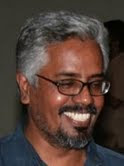RAJNIKANT PHENOMENON


Rajnikant Phenomenon
Rajnikant's Sivaji The Boss has virtually taken the country by storm sweeping the market and setting new records in terms of reach and marketing. For one, sheer scale of the film itself is mind-boggling. Reported to have costed Rs 80 Crores in production, it is the biggest ever film production from India. Another striking factor is its reach. It is literally the first global release for an Indian film, that also from a 'regional' language, that stands testimony to the spread of Rajni fandom. For instance more than 70 prints are released in Japan and Malaysia alone. (In Malaysia there were riots by Rajni fans in front of theatres, when the prints didn't arrive in time!) Evidently, Rajni phenomenon is not something confined to the local or regional, but one that cuts across cultures and territorial bounds. Obviously the stardom and 'histrionics' of Rajnikant appeal to something elemental in film buffs all over the world.
What is it that makes people throng the theatres in such numbers braving inclement weather and physical discomfort? What is it that keeps this kind and level of expectations and 'devotion' live and vibrant for years despite the fact that his last film was released almost three years ago? Can any other star in India or abroad create and more importantly maintain such frenzied expectations for so long? Most of our stars will wither and fade the moment the limelight turns away from them. It is certainly something that goes beyond media hype; for one can't create and maintain a hype without it touching some raw nerve or living up to its image in some way or other.
In the case of Rajnikant, several factors seem to have worked to create the aura. One element is the personal 'style' he has developed over the years. Spurning any pretences at realism or naturalism, he has virtually evolved a 'star language' – of the body, gestures and words – of his own. It has more to do with the narrative-melodramatic tradition of performing arts rather than cinema. For, it is the same old story all over again and again, but only in different guises. The basic elements are all the same – lowly origins, conditions that cry for and spark heroism, the fight with the enemies with romance as its byproduct, and finally, the climactic vanquishing of the powers that be. Obviously, one knows the whole 'story' already but we are only watching it being performed and enacted differently.
At one level, the Kamal-Rajni duo continues the lineage of Sivaj-MGR duo of the earlier decades. In both cases, the contrast has striking parallels. While one of them is dramatic-realistic, the other one is the heroic-fantastic kind. The Kamal and Rajni duo has taken this contrast and tension to greater heights and intensity using new technologies of imaging and also make-up that are available to them (It is not a coincidence that both give great importance to make up and costumes. It is also worth noting that in Tamil cinema, the investment on special effects is more to boost the person/a of the star-actor than to create an ambience or enhance the rendering of the narrative). But Kamal is obsessed with more and more of the visceral and the emotional, churning out several subhuman and lonely characters who are challenged in various ways, social, political, emotional, physical and psychic (Guna, Alavanthan, Thenali, Sippikkul Muthu, Kalyanaraman, Apurva Sahodarangal, etc). In contrast, Rajni worked at the other end, celebrating the magic that the medium of cinema is capable of, in the process 'playing' superman characters of various kinds. Interestingly, while the fair, upper caste bodied Kamal 'falls down' abysses of various kinds, to expose the revolting innards of society, Rajni, the dark hero, 'rises up' from severe constraints and lesser life to fight back through magical and superhuman means. So while Kamal constantly de-faces , Rajni re-faces himself.
Ironically, one element that is basic to star persona is the personal life of the actor in question. A comparison of the star persona, public image and folklore surrounding the above two actors would make an interesting study about our own subterranean yearnings and journeys. Significantly, Rajnikant is an actor who has (maybe deliberately and consciously) nurtured two faces of stark contrast. On the one side is the onscreen image of the 'style mannan' that he is for the last three decades, and on the other is the very common and 'ordinary' man that he is offscreen. It is interesting to note that in his public appearances Rajni is consistently seen without any makeup. This in a way 'shows him off' as an ordinary person like you and me, thus paving the way for easy identification. It also very firmly separates the onscreen glamour from offscreen presence, adding to his mass appeal and star magic at the same time.
So, Sivaji is yet another solo performance by Rajnikant, but one only he is capable of.




